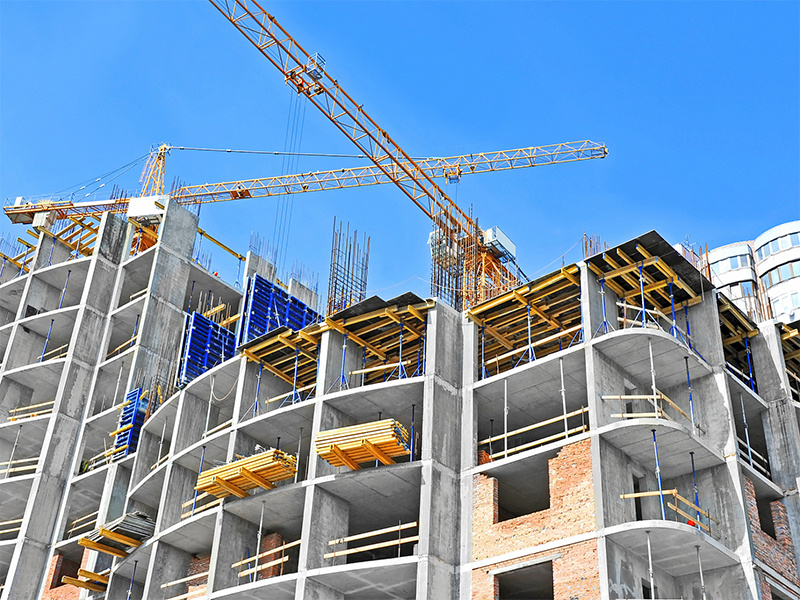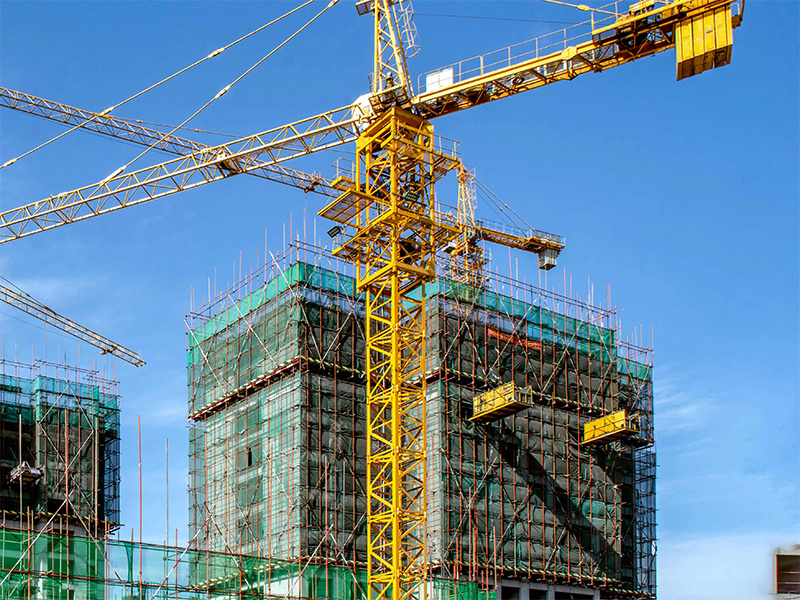20
2025
-
03
What are the methods of construction technology in building engineering?
Author:
When applying deep foundation pit support construction technology
1. Construction technology of deep foundation pit support
When applying deep foundation pit support construction technology, the construction unit should prepare a reasonable construction design plan based on the actual situation of the building project. Currently, the commonly used construction technology in this category is the cast-in-place pile construction technology. Before formal operation, construction personnel need to level the construction site, excavate drainage ditches, and determine the axis positioning points and benchmarks based on the construction design plan, in order to implement the laying out work and clarify the pile position coordinates; Secondly, carry out tasks such as drilling piles and pouring concrete. During the drilling process, set up water pumps and pile supports reasonably, while controlling the groundwater level below the mud level; Finally, inject an appropriate amount of mud into the hole in an orderly manner to maintain the lubrication of the borehole and reduce the resistance during later construction.
2. Construction technology for earthwork engineering
Generally speaking, earthwork engineering involves site leveling, earthwork filling, excavation of foundation pits and pipe trenches, and the requirements for construction conditions vary among different stages. Therefore, the construction unit needs to choose construction methods and equipment reasonably based on the actual situation. For example, backhoe excavators are more suitable for excavating Class I, II, III sandy soils with high moisture content, as well as independent foundation pits. Earthwork excavation and backfilling technology is one of the key contents of construction technology. In the actual operation process, relevant technical personnel first collect and calculate various data such as soil compaction and moisture content, and then combine the different characteristics of construction technology and specific transportation requirements. Finally, they utilize the local terrain advantages to ensure the safety of excavation and backfilling. In addition, relevant technical personnel need to scientifically and reasonably develop slope support plans, optimize the foundation as much as possible, and enhance its stability and seismic resistance.
3. Construction technology for masonry engineering
As one of the important links in the construction process of building engineering, the construction technology of masonry engineering mainly includes the following aspects.
(1) Leveling up.
Before formal masonry, relevant construction personnel should determine the elevation of each layer based on the clear foundation moisture-proof layer, and then use cement mortar or fine aggregate concrete to complete the leveling work.
(2) Line up.
Construction personnel use ink lines to mark the axis and width lines of the wall, as well as the position lines of door and window openings, on the top surface of the foundation based on the axis lines marked on the gantry board and the wall dimensions indicated on the construction drawings.
(3) Lay bricks.
After the laying out is completed, the construction personnel can place the dry bricks on the base surface according to the selected masonry method, and at the same time check whether the length of the laying out at positions such as door and window openings is consistent with the length of the brick placement.
(4) Stand a pole with a height of several meters.
Construction personnel need to use a skin gauge to measure the thickness of brick joints and the specific elevation of beams and other areas.
(5) Hang the line.
Construction personnel should use single-sided or double-sided hanging lines to keep the masonry in a vertical and flat state.
(6) Bricklaying.
Construction personnel should use the "Three One" bricklaying method to carry out masonry work at the location where bricks are placed.
(7) Jointing.
Construction personnel need to use materials such as mortar to clean and correct the wall surface to ensure its smoothness.
4. Electrical grounding construction technology
Electrical grounding construction technology is one of the important contents of lightning protection grounding engineering, and it is also the key to improving the lightning protection effect of buildings and ensuring the normal operation of lightning protection systems. The operating principle of this technology is to use a lightning protection grounding system to timely transfer the lightning strikes suffered by buildings to the ground, in order to reduce lightning hazards. In specific operations, construction personnel need to select grounding devices reasonably according to the actual situation and construction requirements, and strictly standardize the grounding construction process. Construction personnel can use a common grounding construction method for the installation and improvement of lightning protection systems, but it should be noted that the grounding resistance should not exceed 1 Ω.
If the electrical grounding construction does not achieve the expected effect, the construction personnel need to use manual grounding electrodes for treatment, and when overlapping round steel and bottom steel plates, the length of the overlapping steel bars should be controlled at 6 times the diameter of the bottom steel bars.
At the same time, construction personnel should also pay attention to the welding work of lightning protection facilities to ensure the quality of welding. After welding is completed, construction personnel should also carry out equipment anti-corrosion treatment through painting and other methods, and make corresponding markings for subsequent construction.
5. Construction Technology for Building Waterproofing
Waterproof treatment is an essential step in the construction process of building engineering. If there is water leakage during the construction process, the construction quality of the building will be difficult to guarantee. For example, roof water leakage caused by construction joints or cracks, external wall water leakage caused by external wall cracking, and decreased waterproofing performance of bathrooms and toilets caused by inadequate waterproofing facilities all affect the overall quality of buildings to varying degrees.
Therefore, relevant construction personnel should use waterproof materials that meet national standards, select waterproof construction techniques reasonably according to actual construction needs, and protect areas with a high probability of water leakage such as corners of buildings, thereby improving the waterproof performance of buildings.
Construction precautions for building projects
Personal protective equipment: It is necessary to wear a safety helmet correctly
2025-03-20
What are the methods of construction technology in building engineering?
When applying deep foundation pit support construction technology
2025-03-20





